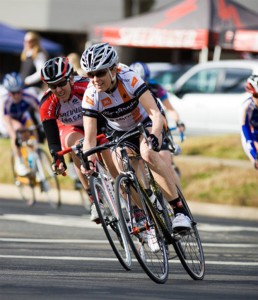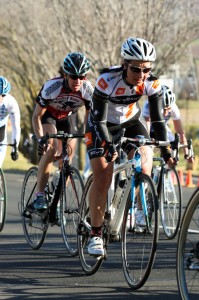Perfection makes Pedaling
Perfecting pedal technique for the Centuries
The key to an efficient pedal stroke is minimizing the dead spot at the top and bottom of the pedal stroke. The stroke is best described by using the clock analogy. From 12 o’clock (top of the pedal stroke) to 5 o’clock we incorporate the greatest muscle activity – including quadriceps (knee extension), hamstrings (hip extension), iliotibial band (lateral stabilizer), gracilis (medial stability), gastrocnemius (plantar flex foot). From 5 to 6 o’clock (bottom of the pedal stroke) the same muscles are employed but with less activity. From 6 to 9 o’clock it is primarily the hamstrings and gastrocnemius. And all the usual suspects are present with the exception of the grastrocnemius to complete the pedal circle from 9 to 12 o’clock.
We want to pedal in circles, but what does that mean? We do not apply equal pressure around the entire circle – it is impossible due to the effects of gravity. The goal in pedaling circles is to perform more work consistently throughout the circle, and actively unload on the upstroke. Essentially, increasing power over the top and through the bottom of the stroke ultimately eliminates power loss on the upstroke.
The benefits of smoothly pedaling circles include – the ability to use more muscle mass and increase power; distribution of work around the entire pedal stroke preventing muscle fatigue; and the potential to improve pedal efficiency and sustainable power.
We initiate the push forward, primarily with the quads, at 10 o’clock (by initiating early we effectively apply power over the top of the pedal stroke) to 5 o’clock. Think about driving the knee, from the hips, toward the handle bars, maintaining solid hip, knee, toe alignment. From 5 to 7 o’clock we think scrape back by engaging the glutes and hamstrings – feel as though you are scraping mud off the bottom of your foot. This is a quadrant of the pedal stroke that demands concerted concentration and training, unlike the push forward, this movement is not as natural. From 7 o’clock back to 10 o’clock – it is an active unloading of the pedals – studies have shown it is counter-productive to try to generate power by pulling up – so the goal is to essentially alleviate the recovery leg’s dead weight on the pedal.
We train and enforce pedal technique and efficiency via single leg pedaling drills as well as high cadence and specific strength, low cadence intervals.
Single leg pedaling drills are best, first attempted on a stationary bike trainer. Take one foot out of the pedal and pedal single-legged for 15 seconds, with goal to be smooth over entire pedal stroke, especially at the top and bottom. Start single-leg drills with 6×15 seconds on each leg, and as long as there are no hiccups around the pedal stroke, increase time by 15 seconds every two weeks, up to a minute. These drills provide valuable feedback on where our pedaling strengths and weaknesses reside. We utilize this information during interval sessions to help focus our attention on the specific sections of the pedal stroke where we can make improvements.
High cadence intervals, 90-120 rpm, hone the nervous system and teach the body to intuitively pedal efficiently. High cadence pedaling, in general, is an efficient technique as it lessens the load on muscular forces and transfers it to the cardiovascular system. Start with 6x2min, with equal recovery, and a perceived exertion of 60-70%, the goal is not harder and longer, but again efficiently pedaling smooth circles.
Specific strength intervals known as slow frequency repetitions (sfr) are extremely effective. These are intervals performed on a shallow grade of 4-6%, with low cadence 40-60rpm and high resistance by using big gears. When first attempting – please be mindful of the knees, hips and lower back as the torque is high and best to err towards 60rpm until specific strength is developed.
On your long endurance rides, enjoy the fruits of your specific pedaling workouts – think and feel smooth, round, fluid and relaxed.
See you next time for the final installment on century riding – avoiding back pain on the bike.



